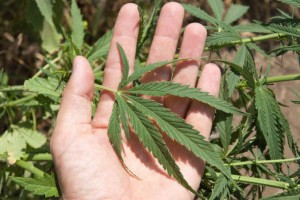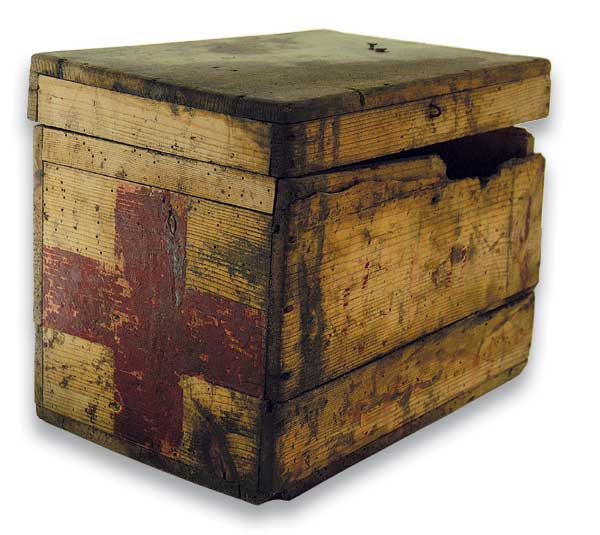Medical Marijuana’s Public Health Lessons — Implications for Retail Marijuana in Colorado
Tista S. Ghosh, M.D., Michael Van Dyke, Ph.D., Ali Maffey, M.S.W., Elizabeth Whitley, Ph.D., Dana Erpelding, M.A., and Larry Wolk, M.D.
N Engl J Med 2015; 372:991-993March 12, 2015DOI: 10.1056/NEJMp1500043
- Article
- References
- Comments (2)
-
In 2000, Colorado residents voted to legalize marijuana use for medical conditions such as glaucoma, HIV–AIDS, cancer, seizures, and severe pain. From 2000 to 2009, medical marijuana was available in Colorado only from plants grown in noncommercial, home settings, and the number of medical users or registrants remained relatively small. But in 2010, state law was changed to permit commercial production and distribution of medical marijuana. The number of registrants (both adults and children) grew rapidly — from 4819 in December 2008 to 115,467 in December 2014 (see graph
 Number of Patients in the Colorado Medical Marijuana Registry, 2001–2014.) — and medical-marijuana dispensaries proliferated. Then, on January 1, 2014, Colorado became the first U.S. state to allow sales of recreational, or retail, marijuana. With no state models or national guidance to follow, Colorado public health officials have turned to lessons from medical marijuana to prepare for the potential public health implications of more widely available recreational marijuana.
Number of Patients in the Colorado Medical Marijuana Registry, 2001–2014.) — and medical-marijuana dispensaries proliferated. Then, on January 1, 2014, Colorado became the first U.S. state to allow sales of recreational, or retail, marijuana. With no state models or national guidance to follow, Colorado public health officials have turned to lessons from medical marijuana to prepare for the potential public health implications of more widely available recreational marijuana.Colorado currently has more than 500 medical-marijuana dispensaries, and registrants may purchase or possess up to 2 oz of marijuana, the equivalent of as many as 50 marijuana cigarettes. Alternatively, patients may grow up to six plants in their homes or register with a designated caregiver who can grow up to six plants for them. Registration requires a physician’s recommendation, but some physicians provide such recommendations despite having little training and with limited testing or evaluation of the patient. These factors have contributed to increased general access to marijuana.
One resulting public health concern is a potential increase in adolescents’ access to and use of marijuana, given the potential negative health effects on this population. Data on prevalence of use by adolescents in states with medical-marijuana laws have been conflicting, however, and Colorado survey data have not revealed increased prevalence. A state survey of middle-school and high school students showed that whereas the proportion perceiving marijuana as highly risky decreased from 58% in 2011 to 54% in 2013, the proportion reporting having used marijuana in the previous 30 days dropped from 22% to 20% over the same period, and the proportion reporting ever having used marijuana decreased from 39% to 37%. Although these changes are not statistically significant, they imply that the levels of perceived risk and use among adolescents remained static at worst as the commercial availability of medical marijuana increased.1 Enhanced public health monitoring may help to elucidate the connections among availability, risk perceptions, and use.
The commercialization of medical marijuana in Colorado has allowed the proliferation of new consumable marijuana products, including candies, lozenges, baked goods, and beverages. In the medical-marijuana market, these products were intended to be used under the guidance of a caregiver or dispensary operator by patients who were uncomfortable with smoking or vaporizing. Little attention was paid to developing standardized dosing levels, guidance for novice users, or an infrastructure for addressing food safety and contamination issues. In addition, legalization of marijuana cultivation for dispensaries facilitated improvement of growing conditions and horticultural practices, which has led to an increase in potency — the percentage of the psychoactive ingredient tetrahydrocannabinol (THC). As a result, THC levels have increased from about 15% to more than 20%, and levels in extracted hashish or concentrates can reportedly reach 90%. The wide range of marijuana products and increased potency may have important public health implications.
The availability of diverse edibles puts young children at risk for unintentional poisoning (see the article by MacCoun and Mello in this issue of the Journal). States where medical marijuana is legal have been shown to have higher rates of calls to poison-control centers for unintentional marijuana exposure in children under 9 years of age,2 and more patients sought care at a Denver-area children’s hospital because of unintentional marijuana use after medical marijuana became commercially available.3 These findings suggest that greater availability of marijuana, particularly in edible products, can increase risks to young children. Already, since retail sales began in 2014, the Rocky Mountain Poison and Drug Center has received over 70% more calls related to marijuana exposure than it did in 2013.4
The legalization of recreational marijuana in Colorado has also taught us about potential adverse effects of edible products. Soon after recreational marijuana was legalized, edible products were implicated in two deaths in Colorado. Marijuana’s peak psychoactive effects can be delayed by up to 4 hours after ingestion, as compared with seconds or minutes after inhalation of marijuana smoke or vapor.4 Furthermore, there is great individual variability in the effects of ingested marijuana. These factors can make it hard for users to know how much product to use. The effects from ingestion can last more than 8 hours, extending the duration of impaired judgment and coordination that can lead to unsafe driving and accidental injuries.
In addition, the lack of standards for dosing and potency of marijuana edibles raises concerns that were not fully resolved through medical-marijuana regulations owing to a lack of relevant research. As such products become broadly available to Colorado residents and tourists, public health officials and policymakers will need to revisit these issues.
Impaired driving is another relevant concern. National studies provide conflicting evidence on whether states with medical-marijuana laws have higher rates of traffic fatalities and whether marijuana use increases the risk of fatalities, but a Colorado-specific study revealed an increase in traffic fatalities involving drivers who tested positive for marijuana.5 These findings suggest a need for increased monitoring and public education and for setting limits for drivers’ THC levels.
Colorado has been examining ways of applying lessons from 14 years of medical-marijuana legalization and from alcohol- and tobacco-related policies. Laws have already been enacted to limit marijuana use to people over 21 years of age and to amend Colorado’s Clean Indoor Air Act to extend smoking restrictions to marijuana. But the issues of increased availability, diversity and potency of edible products, and impaired driving require further action. For example, despite the age limit, adolescents may still have increased access to marijuana. Colorado has added questions on marijuana use to population-based surveys of both adults and young people, aiming to help public health practitioners identify worrisome trends and enact policies and interventions to better protect vulnerable subpopulations. In addition, the state is launching an education campaign to help prevent initiation of marijuana use by adolescents.
Colorado has created surveillance systems to monitor the numbers of emergency department visits and hospitalizations related to marijuana use, as well as data on calls to poison-control centers. These efforts should permit early identification of trends and provide data to support any policies or regulations needed to protect children. Public health officials also launched a public awareness campaign about safe storage of marijuana products in January 2015. The recreational-marijuana regulations do cover child-resistant packaging for edible marijuana products, limits on their THC content, food-safety requirements, and required potency and contamination testing. These rules are being improved to make the serving-size information comprehensible to the average user. Proposed regulations would ensure that products are easily separable into single servings containing no more than 10 mg of THC. In addition, labeling improvements under consideration would ensure that marijuana products could be easily identified and distinguished from normal food items. Since well-publicized problems with edible products occurred early in the implementation of the recreational-marijuana law, the marijuana industry has taken the lead in implementing education campaigns to ensure that novice consumers understand the delayed effects of ingested marijuana and the appropriate serving size. In addition, Colorado public health officials are developing more extensive educational materials to increase public awareness of this issue.
To address impaired driving, Colorado passed legislation setting a limit of 5 ng of Δ9-THC per milliliter of blood at which drivers are considered to be operating under the influence. The Colorado Department of Transportation launched a public education campaign about impaired driving in 2014. In addition, Colorado has added questions on marijuana use during driving to population-based surveys on behaviors and is adding marijuana-use questions to its trauma registry to elucidate the impact of marijuana legalization on injuries related to impairment. These efforts may help answer questions regarding marijuana legalization and traffic fatalities and inform a better public health response.
As more data become available, we hope to learn more about averting any negative population health effects of the expanding availability of marijuana.
Disclosure forms provided by the authors are available with the full text of this article at NEJM.org.
SOURCE INFORMATION
From the Colorado Department of Public Health and Environment, Denver.
……………………………………
https://www.colorado.gov/cdphe/categories/services-and-information/marijuana










